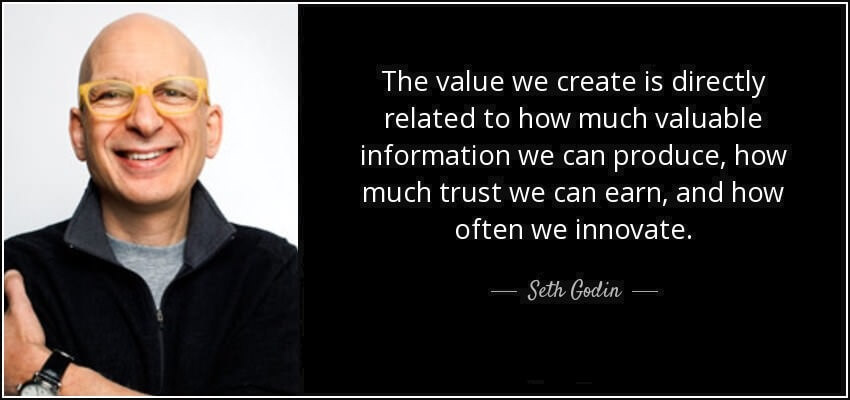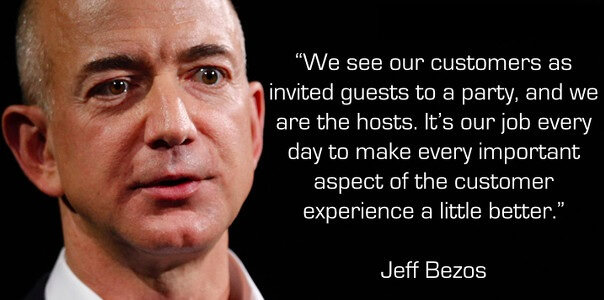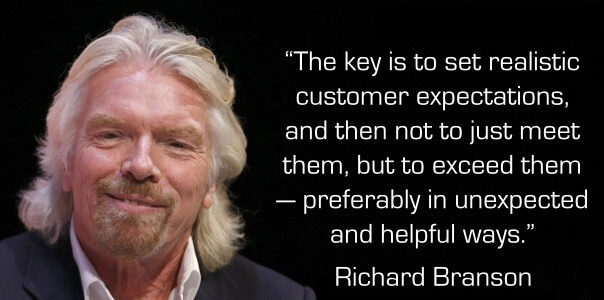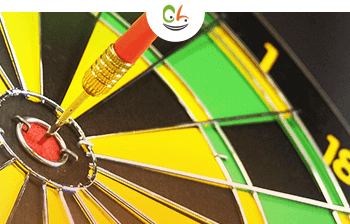Are you a new seller trying to find eBay niche products to sell?
Have you been selling on eBay for a while and looking for a new eBay niche to grow your business?
In this post, I’m going to cover one of the most important aspects that led to our success – How to find a niche product to sell.
Finding the perfect eBay niche products
It took us about 3 years of selling on eBay to start identifying the common patterns for great niche products.
Once we began realize what the most critical criteria for picking the right eBay niche were, the road to $100k /month on eBay was paved. It became a matter of time, dedication and persistence until we hit significant success.
At first, we didn’t care about anything but the price – If I could get a product for $50 that could sell on eBay for $70, that was the perfect niche for me.
I was selling everything, from hair straighteners to fitness equipment.
Thinking of my younger (naive) self makes me smile today, I couldn’t have been more wrong (competing on price is actually one of the deadliest dropshipping mistakes I’ve made)!
Back in the day, we didn’t have any blogs, meetup groups and support – we had to learn everything by trial and error.
As a first time business owner I made tons of eBay selling mistakes (including losing $20,000 worth of goods in the post…), luckily I was persistent enough to turn failure into opportunity.
Hoping that you will learn from our journey – I’m now sharing what we’ve realized about the most important criteria for choosing the right niche to sell on eBay.
Criterion #1: Choose an eBay Niche Where You Can Add Value
I mention this concept in almost all of the posts on this blog –
Put simply – if your business doesn’t create real value, it will eventually die.

compete on value in your ebay niche
Ask yourself the following question – “If I closed my eBay business tomorrow, would there be anybody who’d miss it?”
Example of adding value
eBay Seller A is dropshipping cameras between Amazon and eBay. He copies the text description from Amazon to his eBay listings.
eBay sellers B is dropshipping the same cameras, but he invests his time and energy to create a professional listing:
- He helps potential customers learn about what’s important when looking for a camera.
- He adds images which showcase what’s included in the package.
- He includes an image gallery which shows the camera in different views,
- He learns about cameras, what buyers look for in a camera and he can provide insightful customer service.
Seller A is adding no value to anyone – if his eBay business closed, nobody would miss it.
On the other side, seller B creates real value – According to a study by eBay on how to optimize eBay listings, the first thing a buyer usually does on eBay is try to learn about the product space. Looking to understand – “What is important in this category of products?”
Seller B is providing value by adding information and valuable content that did not exist on the original Amazon listing. If his eBay business shuts down, he would be missed by the segment of customers who found that extra info helpful when buying their camera.

importance of adding value
Now let me ask you another question –
If Amazon started selling in your niche, would your business survive?
If the only value you create is “lowest prices” – Amazon will win (Amazon already does that with its own product line called AmazonBasics). They have a stronger buying power, they control the payment gateway, they have fast shipping and they will soon start flying delivery drones.
And for many eBay niches, it’s only a matter of time before Amazon and other big players join in and dominate.
So…
How can you win in the “Age of Amazon”?
Simply put – Add value that they can’t.
A few months ago, my smartphone died and I needed to buy a new phone. I checked on eBay and Amazon for the lowest prices, but I wasn’t really sure what I was looking for. So I decided to check a mobile phone store close to our office.
I wasn’t looking for an “iPhone 6”. What I was looking for was “An affordable smartphone with a long battery life and a fast processor”.
The staff at the store provided me with professional advice, educated me about the pros and cons of the various models, eventually helping me pick a device from a brand I had never heard of that ideally matched my needs.
Needless to say it would have taken me weeks of research to find that model by myself, and buying from a local store also insured I got warranty with a local repair laboratory.
Yes, there are still people who will get expert advice and then go to eBay /Amazon to order the item for a $25 cheaper price.
However, there is a large enough segment of customers who are happy to pay some extra for expertise and great pre, during and after sales service.
The Amazon’s of the world sell everything, from diapers to yachts. They simply cannot afford to laser focus on each and every niche and offer an amazing buying experience at the same time.
This is exactly where we win as small / medium sized merchants – we can focus on an eBay niche and make damn sure we provide an absolutely amazing experience to the customers. From professionally designing the listings with outstanding content to providing expert advice via customer service.

focusing on customer experience
Let’s bring this down to actionable takeaways –
How to choose an eBay niche where you can add value?
We have sold in many eBay niches. Over time, we began to realize that there were common criteria for niches where we could add maximum value –
- Complicated products – When we were selling car GPS devices, we were getting tons of questions from customers, anything from the processor speed to what the included maps were. The fact that this was a confusing/ complicated eBay niche gave us much space to offer value in the form of educating the customers about what’s important, making it easier for them to understand if this was the right product for their needs, helping them get started with the product once they got it etc..
- Products that require pre-sale expertise – I have a friend who sells antiques and Judaica on eBay. He gets questions I (or Amazon) would never be able to answer about his niche. He often gets inquiries from collectors about items he doesn’t have in stock, which is when he utilizes his network and expertise in his niche and is usually able to source the requested or a similar item for his customers.
This requires a lot of experience and expertise in his eBay niche, which an “everything store” seller can never offer. - Products that require after-sale support – When selling items that require installation or assembly, a significant amount of buyers will ask for help with their product – after they get the item.
This is where you can shine, solving a problem for the customer and making them happy almost always insures that you’ll earn an ambassador for your business.
Essentially, the more touch points the item requires with the seller, the more room for help and value creation it leaves for you!
Criterion #2: Choose a Niche With a Price Range of $100-200
I have previously devoted a post to the method we used to choose products – How to Find The Best things to Sell On eBay
One of my main points is to look for items that will leave you high enough margin, while not deterring customers from buying online.
As an online business, your profit margin is usually between 10-20%. The higher the item price – the higher your margin will be, but we found that items priced above $200 begin to have some disadvantages –
Why do we look for items priced at $100-200?
#1: Support and scale
customers who purchase items priced at $500 expect you to go above and beyond to make them satisfied, while customers who purchase a $150 item are usually happy with the included manual. This is of course a figure of speech, but you see what I mean. At scale, it might become hard to support customers with a VIP attitude because they purchased an expensive item.
#2: Revenue and profit
As items increase in price, the profit margin on them usually decreases. For example, $500+ priced digital cameras typically generate only a 2-3% profit margin.
This is why eBay charge a much lower fee for extremely competitive categories.
Let’s explore two options –
- Selling 10 items a month at $500 each, netting 5% profit – $250 total
- Selling 50 items a month at $100 each, netting 10% profit – $500 total
Selling a $500 item is usually much, much harder than selling a $100 one!
With a $500 price tag, a customer will usually want to have at least some kind of human contact, ask some questions, get assurances etc..
My point is that it’s usually easier to sell 50 items for $100-200 each, than 10 items for $500 each.
#3: Worth of mouth effect
Every customer is a potential ambassador for you business.
Viral (word of mouth) is the most effective marketing strategy. Ask yourself – would you rather purchase from a seller with 100 anonymous reviews, or from a seller your friend recommended to you?
You want to create a network of “recommending friends” – every happy customer of yours is a potential recommending friend.
With high priced items, you make less transactions, which means that the word of mouth effect will be weaker.
I once had a girl from the US purchase a hair straightener from me. She was so happy with it that she uploaded a Youtube video of herself using it and shared a link to my eBay listing. The more customers you have, the more chances for awesome free advertising like this you get!

Create value and make your customers happy
Try CrazyLister for free! Easily create professional, mobile-optimized eBay listings
Criterion #3: Choose a Niche with a Low Turnover
As we discussed in criterion #1, if you don’t create real value, you basically don’t create a business – the world only needs your business if you’re valuable to somebody (besides yourself…).
Adding REAL value for your customers takes time. Creating professional, high-converting eBay listings takes time.
You’d better look for an eBay niche where your investment will yield returns for a longer period of time, as opposed to a niche where you’ll have to constantly renew your listings because it has a high turnover.
Look for an eBay niche where your listings can stay relevant for months or even years.
If you’re selling unique / used / collectible items – invest in creating a professional, high-converting template, and then replicate it using changed the images and texts.
This blog post is full of actionable advice as to how to create such templates – 8 eBay Hacks We Learned Growing eBay Sales from Zero to $100k/ Month
Conclusion
If I were to summarize this post with 3 words, they would be – Create real value.
Constantly keep asking yourself the question – will my eBay business be missed if I close it down?
If the answer is yes, double down on whatever makes it true for your eBay niche.
If it’s a no, and you’re serious about building a sustainable business – use the criteria we discussed here to find an eBay niche where you can add real value to customers.
If you’re looking to build a new business or expand an existing one to a new niche – try looking for an eBay niche where the prices range around $100-200, and where the turnover of products is low – to gain the maximum return on investment from your efforts.




